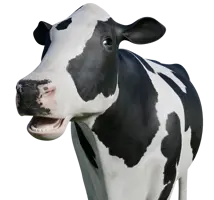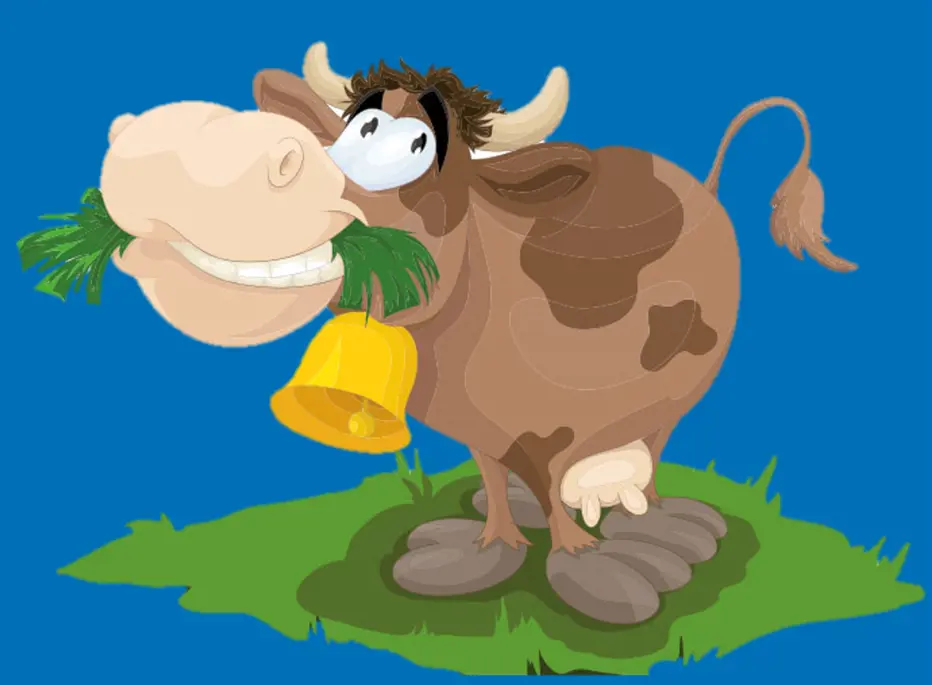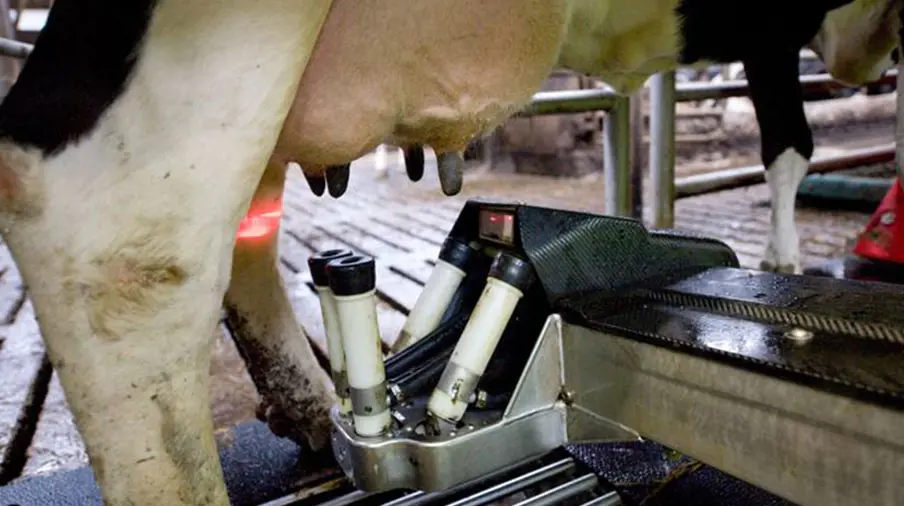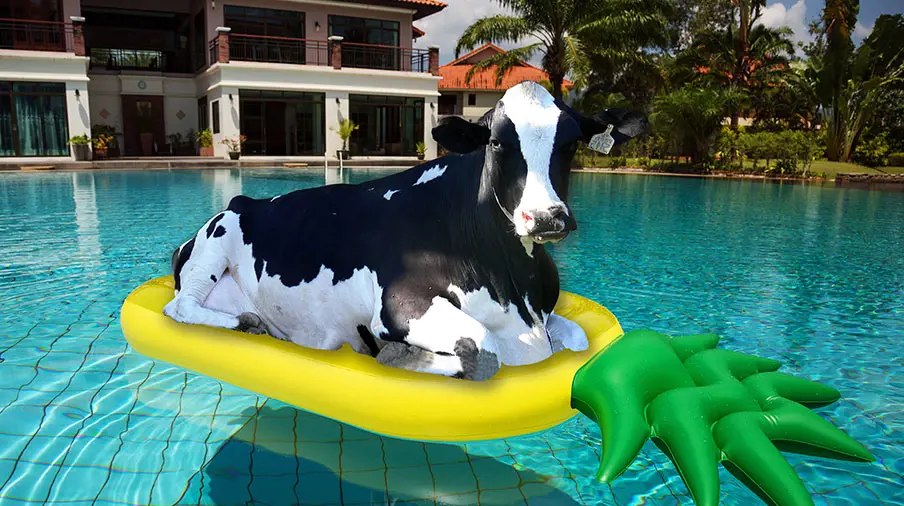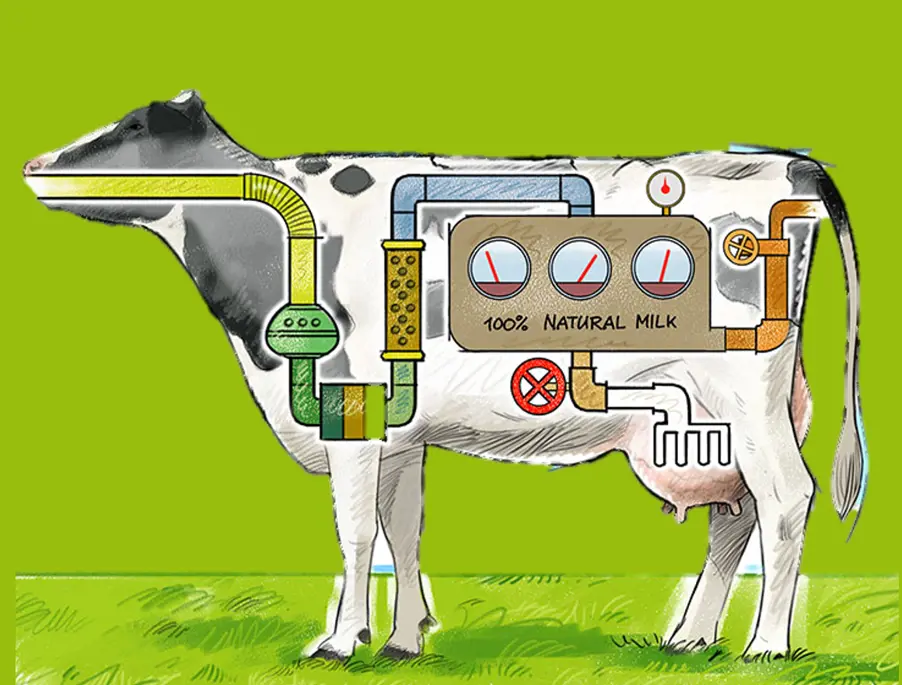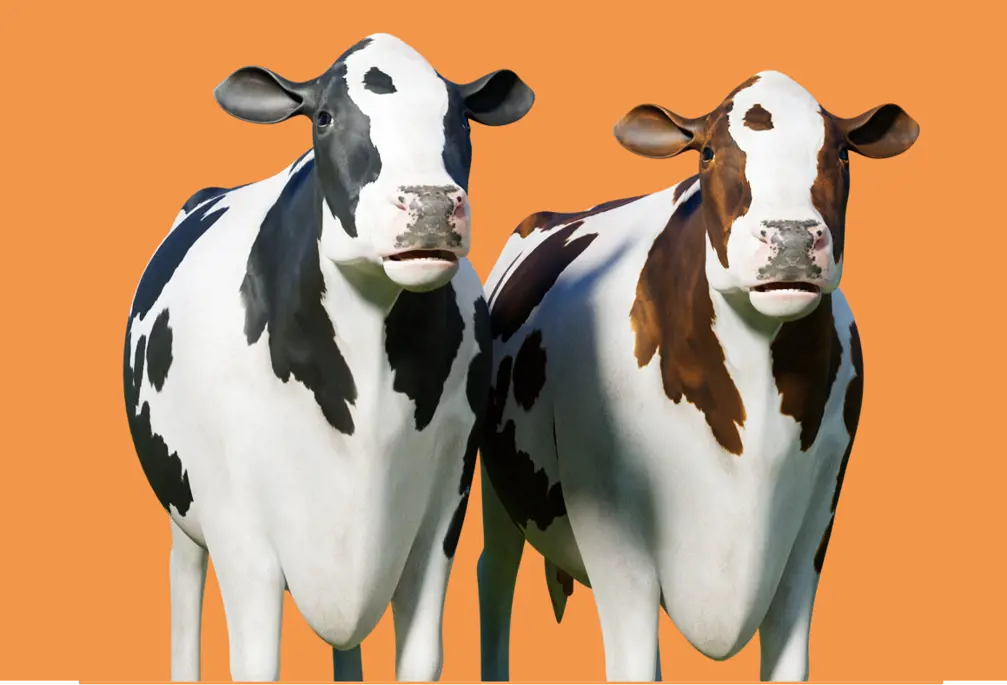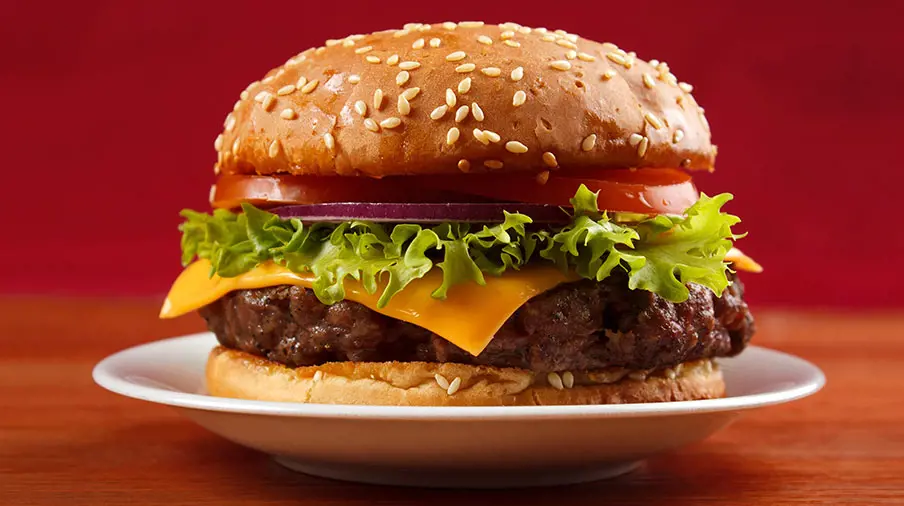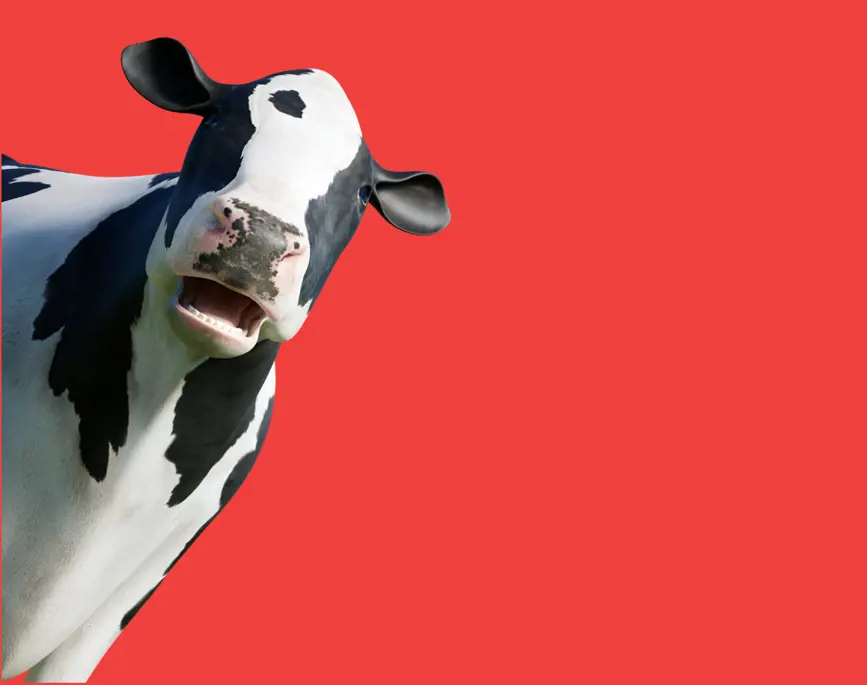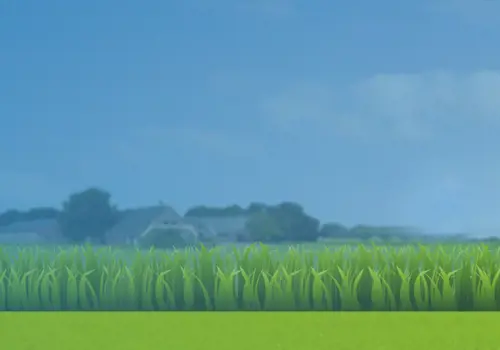
A living milk factory
A female calf produces milk after about two years, but only after she has given birth to a calf herself. But how does a calf actually become a dairy cow? Here’s Dean and Anna to show you!
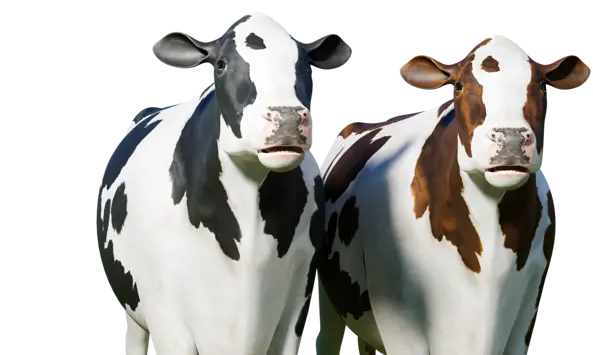
1. Love at first sight
A female calf is ready to become pregnant after about 13 to 14 months. The farmer keeps a close eye on whether she is going to be in heat. ‘In heat’ means she is very fertile at that very moment and might start acting a bit crazy. She might mount (climb onto) other cows, for example, or she might let another cow mount her. When a bull is out in the meadow, he tries to find a cow that is in heat. When he does, he walks behind her like a dog, licks her buttocks and tries to mount her.
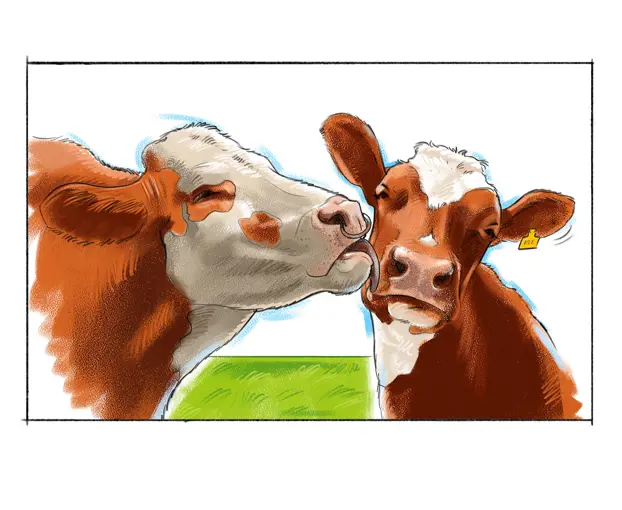
2. Insemination
Unfortunately for the bull, cows are almost always artificially fertilised. This is called insemination. Of course, a farmer lets the cow and bull express their natural instincts, but there can be quite a few mishaps if the bull fertilises the cow himself. That passionate bull weighs more than 1250 kilograms. Just imagine: 1250 kg of brawn on top of the poor cow. So, the farmer fertilises the cow through a tube, which contains sperm from a bull. He does this at just the right time and hopes that the cow will become pregnant right away.
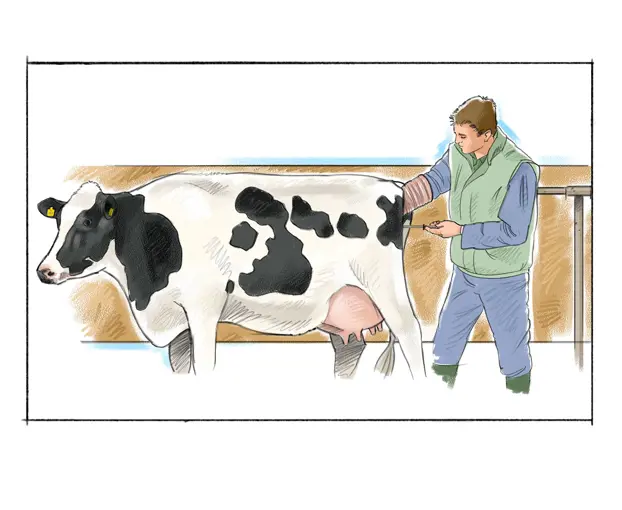
3. A calf is born!
After about nine months, it is time for the pregnant cow to give birth. That process is called calving. As soon as the calf is born, the cow starts to produce milk. The farmer can then start milking the cow! The calf has some time to recover before it goes to its own home, where it gets extra care and attention. Did you know that it takes a baby human about a year to learn to stand up? A calf can stand up on the same day that it’s born. That’s pretty impressive!
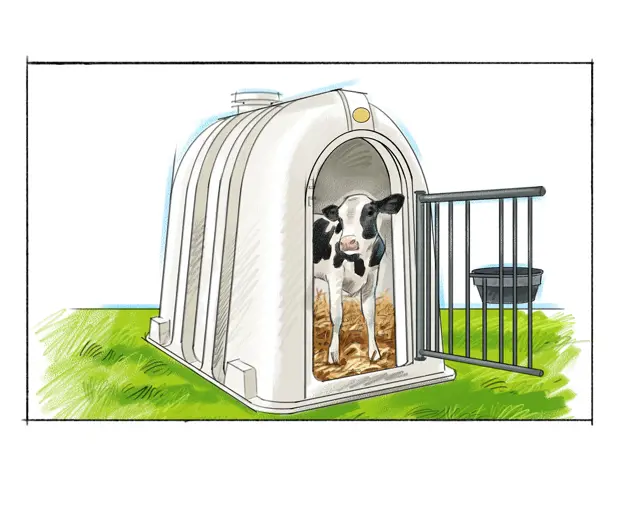
4. Milk, milk and more milk
A Dutch dairy cow produces on average 10,000 litres of milk per year. That’s about 30 litres a day... 30 packs of milk, wow! That’s a lot of milk. But did you know that a cow can produce up to 45 litres of milk a day after calving? Hence the nickname a ‘living milk factory’.
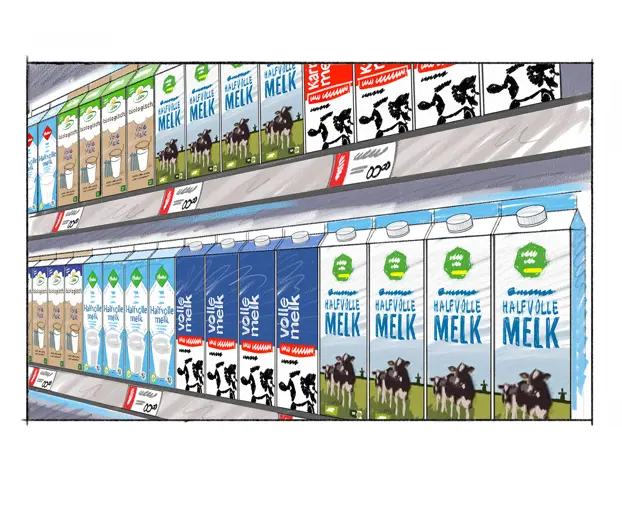
5. Pregnant again
A month after giving birth, a cow is ready to become pregnant again. The farmer inseminates the cow when she is in heat again. This way, the farmer ensures that a cow produces milk almost all year round. The period between calves is called the lactation period.
Fortunately, a cow is given a six-week break from milking before she gives birth. During this time, she gets other food, because the calf in her belly requires a lot of energy. She isn’t milked to give her udder time to recover. This helps the cow get ready for the next calf to be born in no time.
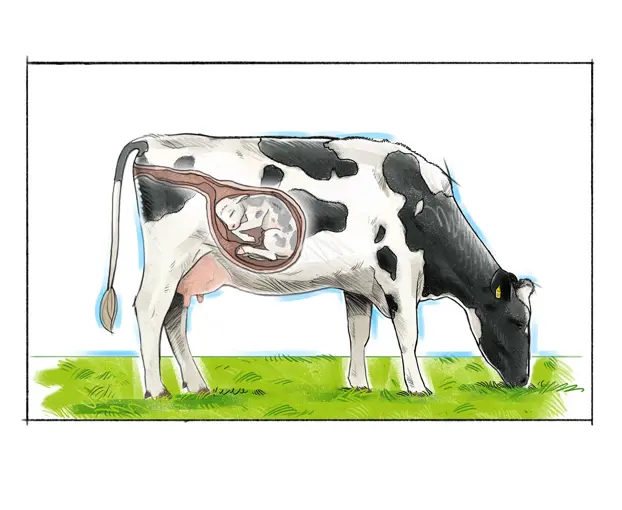
6. 100-tonne cows
On average, a cow has four or five lactation periods. That means she gives birth to four or five calves and produces milk throughout that whole period. There are also cows that produce more than 100,000 litres of milk over 12 to 13 lactation periods in their lifetime. We call them ‘100-tonne cows’.
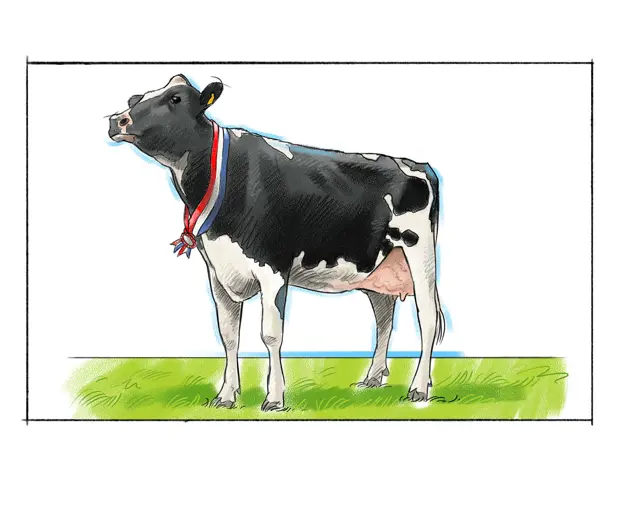
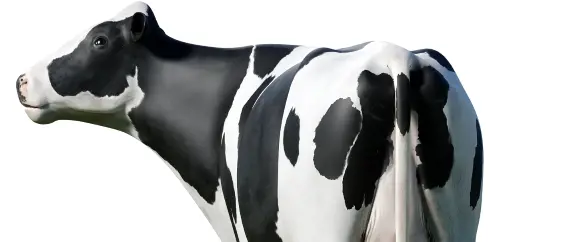
Test your knowledge
Sometimes, when you’re giving a presentation, you might need to ask the audience questions. Why not test your own knowledge here? You could use them in your presentation
